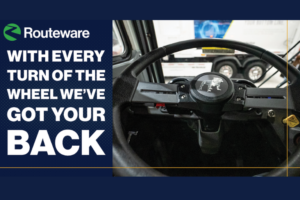We’ve come a long way when we talk about recycling. In most cities, recycling isn’t a new concept. Residents are often willing and enthusiastic followers of the reduce-recycle-reuse mantra. That doesn’t mean your job as a recycling communicator is done. In fact, it’s important to shift your focus, target your messaging, and tackle the issues that are important to your community.
Recycling communication is best when it’s highly tied to the issues that your customers are facing, and figuring out what works best in your area may come down to experimentation.
If participation rates are high, you can use communications to address other recycling goals like organics composting, decreasing contamination, and smarter product purchases. You can usually start with the assumption that residents are motivated to do the right thing – they just need easy, clear ways to follow through. Recycling education is generally more focused on the specifics of recycling in your area, rather than a high-level overview of the concepts and its benefits.
You’re the expert, but part of that expertise means creating communications that are positive, helpful, and inspiring – not technical or complicated. Give yourself credit for how much you’ve achieved so far, and if you need inspiration to take it to the next level, check out these 20 proven communication techniques:
1- Explore all the angles.
People take environmental action for a variety of reasons. Yet, only four in ten Americans consider themselves environmentalists. By understanding and communicating about recycling from multiple angles, you can provide people with different incentives to care about their community and take action on recycling. For example, some groups may be interested in the economic benefits of recycling while others will respond to information about conservation outcomes. It’s best to cover multiple bases and double-down when you find an angle that particularly resonates with your customers.
2- Pete and repeat.
Repetition is key to breaking through and getting your message heard and understood. Communication professionals say that just when an organization is starting to get tired of a message, that’s when it’s beginning to get noticed by the public. Repetition helps people remember what you’ve said. It’s also true that the more someone hears something, the more likely they are to believe it’s factual. Take advantage of repetition by posting recycling communication multiple times per week and posting consistent messages across multiple channels like your social media, digital calendar, app reminders, website banners, and e-newsletters.
3 – Tell the truth.
Younger audiences who have grown up in a digitally-connected, communication-saturated world are both highly skeptical and willing to do their own research. They want to know that what they’re being asked to do will make real impact. Younger recyclers have heard, for example, that some materials they take time to sort are not being recycled. If they feel they’re being deceived, residents may give up on participating in your recycling program or have a casual attitude toward contamination. Take the time to communicate exactly how materials like plastics are being handled in your specific program. This helps maintain trust and keep residents engaged in recycling education and the process of recycling at large.
4 – Be relevant to the audience.
A group of school kids might get excited about how long it takes a juice carton to biodegrade in a landfill, but you can’t take the same presentation to the local Chamber of Commerce. Everyone’s inner child may want to know about the juice box, but local leaders will also be interested in how recycling programs create jobs, enhance the community, and balance budgets. Keep your audience in firm focus, and you’ll find your recycling education program far more effective.
5 – Empower the people.
Your audience needs to know they can make a difference through recycling. You’re asking them to take their time and brain power to follow through with your guidance. You can use data to demonstrate how collective action will make a difference. For example, it’s estimated that recycling a single aluminum can saves enough energy to power a TV for up to three hours. Multiply that across your community so you can give residents tangible goals to reach for. This has the dual benefit of ensuring that your recycling communication resonates, but also creates a sense of community in creating this mutual goal.
6 – Flattery will get you everywhere.
According to psychologists, the human brain is hardwired to seek three things: Affiliation, accuracy, and positive self-concept. We already addressed the first two. Appeal to the ego with positive reinforcement and praise. This can be done by posting monthly “success statistics” on your website and social media such as increased recycling participation, cost savings, or compost volumes.
7 – Focus on digital experiences.
For younger audiences, engaging online experiences are key to maintaining attention and building trust. But increasingly, every demographic group is using digital services, especially post-pandemic. Offer digital tools for self-serve access to recycling information online or with mobile apps. Immediate, easy access to information helps people be more confident recyclers. (Learn more about Collection Calendar or Waste Wizard powered by ReCollect).
8 – Find common ground.
Research shows that people listen to those they like, and they like those with whom they share similarities. It’s key to understand your target audience and communicate with empathy. That means using realistic examples, showcasing diverse and relatable spokespeople, and not asking people to do more than they’re capable of doing.
9 – Point to the experts.
It’s a well-known persuasive tactic to use authoritative spokespeople. There’s a reason marketers have used doctors – or cited “four out of five dentists” – in advertising for decades. Add credibility to your messaging by quoting the Environmental Protection Agency, The Recycling Partnership, or the National Resources Defense Council. Just be sure you’re presenting their information in a clear, digestible way that clearly conveys the point that your recycling communication is attempting to send.
10 – Use the 1, 5, 50 rule.
You can successfully plant just one idea using a mass medium like a billboard; five things during a face-to-face meeting; and 50 or more ideas in a searchable database. You can implement this idea by communicating multiple brief, impactful messages that include a website URL for your waste and recycling app where people can go for details.
11 – About face.
People relate to people. No surprise there. Then why do so many solid waste websites feature pictures of greasy pizza boxes and banana peels in their recycling education materials? You’ll engage more of the community by including diverse photos of people on your website and communication materials. You can even ask residents to submit photos of their recycling and composting activities. This will help encourage others to get on board.
12 – Stay positive.
The risks and outcomes of climate change and environmental degradation are real. But it can actually work against you to tell the story of recycling through the lens of gloom and doom. Research has shown that people find positive messages to be more persuasive, which makes them more likely to act on them. For example, rather than telling residents what not to do, make it a positive: “Recycling cans and bottles will save natural resources and keep our waterways clean.” It’s better to lead with the carrot than the stick, so to speak.
13 – Assume the best.
Instead of giving residents another list with “10 Reasons Recycling Matters,” start with the assumption that they know it’s important and want to be part of the solution. Give concise, helpful information on how people can pitch in and recycle right. This builds the impression that the community is already onboard and it can help nudge additional people to participate. The fear of missing out is real, and if it’s possible to harness FOMO in your recycling education, it’s generally a good idea to do so.
14 – Speak to the children.
Kids are major influencers in their homes. There’s a reason sugary cereal is stocked on the lower shelves in grocery stores. When kids learn about recycling – at school or through a fun online game – they’ll want their family to get involved. Interactive online or app-based recycling games also speak everyone’s kid-at-heart. You’ve got an excuse to keep things light.
15 – Lean into social norms.
Interesting research has been done on environmental action and the human desire for social conformity. For example, instead of using a traditional environmental message, hotels that displayed cards showing that most guests re-used their towels actually saved more water and energy. People want to do what others in their group are doing. Think about the difference between a message that highlights recycling contamination versus one that shows increasing recycling participation in the community.
16 – Avoid strongly held beliefs.
Political polarization is such a strong force, it can pit people against each other on issues that impact the common good. For some people, environmentalism is a bad word and climate change is debatable. In order to get your message across to the largest number of people, avoid hot-button issues. Think about what’s important to your community, like conserving natural resources, creating local jobs, and building fewer landfills. Global issues can seem big and far away, causing people to feel helpless and paralyzed. Keeping it practical and local in your recycling communicationl gives residents incentive to play their part.
17 – Match style.
You may have noticed that some people modify their speaking style – and even gain or lose an accent – when they visit different places. It’s a natural way that practiced communicators relate to their audience. When you talk about recycling, matching the tone and style of the local audience, whether verbally or in writing, can make your communications more persuasive. In recycling education, this means being conscious that your vocabulary and style reflect the community and your target audience.
18 – Ditch the jargon.
Jargon and acronyms create a barrier between you and the target of your communications. As soon as a reader runs across an unfamiliar term, they’ll conclude that the message isn’t intended for them and they will tune out. Insider language is a useful shortcut when talking with peers in the industry, but the public will have a hard time finding their local MRF if they don’t know it’s a municipal recycling facility. Or better yet, just call it a recycling center. If you need to use these abbreviations, be sure to clarify within the first part of your recycling communication, and don’t assume that residents are familiar with it.
19 – Listen first.
Before making decisions about how to communicate recycling information to your community, it’s wise to listen to the questions, ideas, and concerns residents have about the program. You can gather information quickly using social media polls or by asking subscribers a question in your monthly e-newsletter. For example, you might ask, “What’s the hardest thing about recycling?” and give options: a) Knowing what goes in the bin; B) Remembering to put my recycling at the curb on the right day; C) Getting my family to participate; or D) Other (fill in your answer). The feedback will help you adjust the information you provide in your recycling education.
20 – Build your digital brand.
Digital communications are more than just social media and your website. With the ubiquity of mobile devices, people have embraced having an app for just about everything. The good news is, industry-specific, out-of-the-box solutions for solid waste communications have come a long way. Your residents lead increasingly busy lives: They don’t just expect you to provide information digitally, they need it so that they can do the right thing.
Significant research has been done on what goes into effective and persuasive communications. We’ve summarized 20 strategies that can help you enhance your recycling program. Other tested methods can be found in these articles on effective and convincing communications.
Learn more. Routeware provides digital tools for effective, efficient customer communication, powered by ReCollect. Our tools educate, engage, and foster positive disposal behavior to reduce contamination and lower call volumes. Are you ready to up your communication game? Get started with Routeware today.





